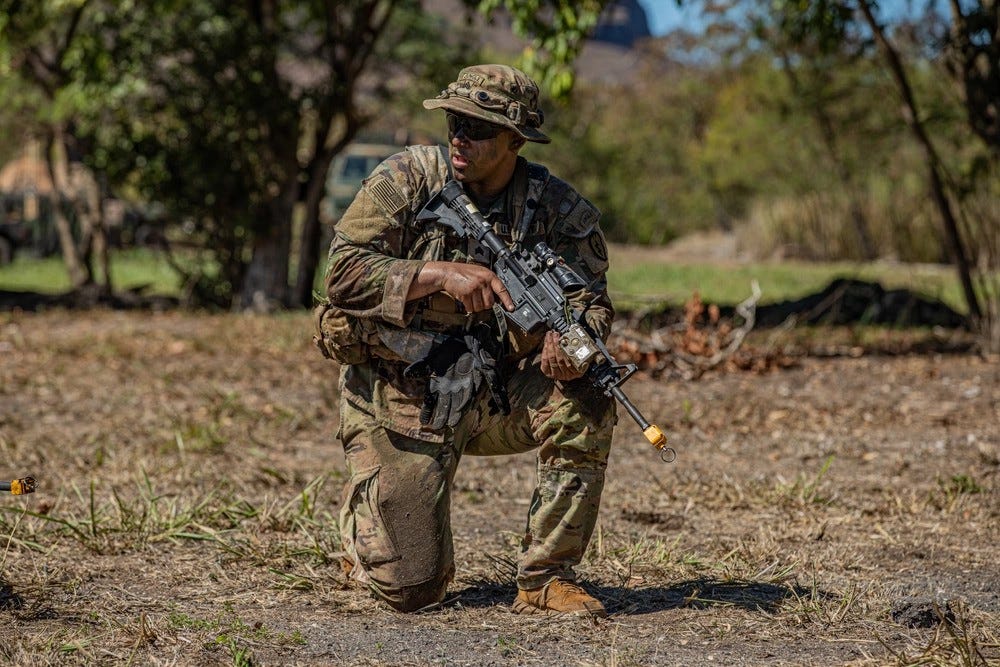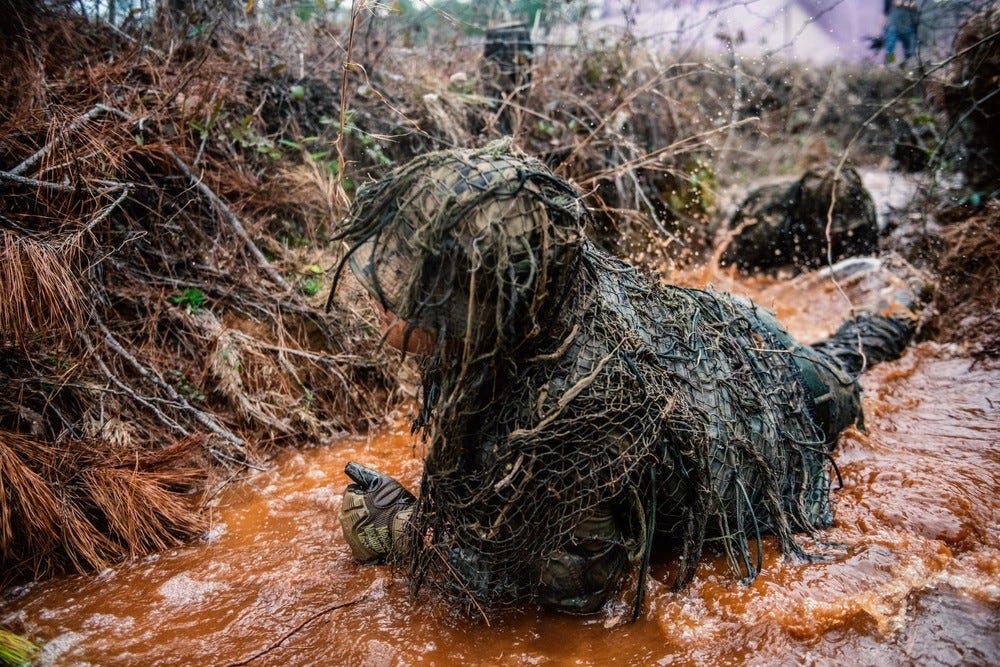Liu Mingsong/Xinhua via Getty Images
- The Pentagon has called attention to the growth of China's missile force.
- In a conflict, those missiles would likely play a role in deterring and targeting US forces in the Pacific.
- A top general says he's worried, but it's a bigger threat to the Navy and Air Force.
China's Rocket Force has seen substantial and sustained growth in the size of its arsenal in recent years, raising concerns in the US about the role that its missiles would play in a potential conflict in the Pacific.
The commanding general of US Army Pacific told Business Insider during a large-scale training exercise in Alaska that while the growth has been "meteoric" and he is "always worried" about the missiles, the Army has many ways to create a "dilemma" that China may not be expecting.
Last fall, the Pentagon released its annual report on China's military, detailing developments over the past year. The report highlighted increases in China's missile stockpiles across the board, increases in the number of launchers, and new capabilities within the Rocket Force, the People's Liberation Army branch handling China's ballistic missiles for conventional and nuclear strike.
Specifically, the Department of Defense said that China is prioritizing the readiness of its missile forces should conflict begin in the Pacific, as well as their abilities to hit a variety of targets at far distances, ultimately deterring and denying enemy forces movement and function in the region.
The Pentagon's assessment falls in line with China's anti-access, area-denial strategy in the region, which is focused on preventing an enemy's forces from maneuvering and operating in the area through the use of a host of weapons and capabilities.
The nature of China's arsenal, which consists of anti-ship capabilities, strike options, and more, and its strategic aims pose a serious threat to warships at sea and the fixed bases the US uses to support its aircraft operations in the region.
By design, that's their focus, to threaten US naval and air might in the Pacific region during a potential conflict, forcing America to rethink its strategies and approaches in the area, but it's a little bit different for ground forces.

U.S. Army photo by Spc. Evangelos Wilson/ 3rd Infantry Brigade Combat Team
During an interview at Fort Wainwright in Fairbanks, Alaska, Gen. Charles A. Flynn, the commander of USARPAC, told Business Insider that while he's "always concerned about rockets," they're "actually there to defeat our air power and our maritime power."
"It's not there primarily to defeat distributed, dispersed, mobile, some fixed and some semi-fixed, reloadable, and, I'll just say, meshed network land forces that are distributed throughout the region," the general said.
There's an argument that if the Rocket Force can get a visual on and acquire targets, then it can kill them, he said, but there are many ways for US Army forces in the area to avoid detection and evade the threat, from masking signatures and military deception operations to presenting "different arrays that would undermine their ability to actually find us."
"I think that what we offer is a dilemma to the PRC that they previously had not factored into their A2AD arsenal," Flynn said. The ability to hide has become increasingly important on the modern battlefield and has been a priority for the Army.
One line of effort, for instance, has been future camouflage technology.
"Advanced camouflage technologies are critical; we are putting a fair amount of money into advanced camouflage systems, both individual, unit, vehicle, etc.," former Army Chief of Staff Gen. Mark Milley said in 2019.
The general explained to Congress that "camouflage systems that break up electronic signatures and break up heat signatures are critical" because "we know that adversary acquisition systems are very, very capable."

U.S. Army photo by Patrick A. Albright, Maneuver Center of Excellence and Fort Benning Public Affairs
But Army efforts and preparations for future conflict are bigger than any single piece of equipment.
US Army forces and their allies across the Pacific have ramped up training in recent years to better prepare its troops for warfare across various difficult environments in the region. Part of the challenge facing these troops is how they prepare for a war in tough conditions, while also figuring out the best ways to avoid or defeat the capabilities that China is developing to deny US forces freedom of movement in the area.
Across the Pacific, from hot and humid jungles to subzero Arctic environments, USARPAC has been exposing its troops to what fighting in the vast region might look like. One way it is doing this is through its new Joint Pacific Multinational Readiness Center, which does annual rotations in Hawaii and Alaska.
The training runs the full gambit of temperature, climate, and environment conditions that challenge soldiers, helping them to be prepared regardless of where they are fighting.
At JPMRC's Hawaii rotation last fall, Flynn emphasized that the Army "will play a key role" in solving the challenges facing the joint force in the Pacific.
That falls in line US Indo-Pacific Command's messaging on the issue. Last year, USINDOPACOM said the Army was "uniquely suited" to maintain a contact layer along the edge of friendly territory, survive initial missile strikes, and "fracture the enemy's anti-access and area-denial network."
Read More
By: [email protected] (Chris Panella)
Title: The top US Army general in the Pacific is 'worried' about China's missiles but counting on his soldiers being a 'dilemma' for the Rocket Force
Sourced From: www.businessinsider.com/us-army-dilemma-china-missile-force-top-pacific-general-2024-2
Published Date: Fri, 23 Feb 2024 11:03:01 +0000
.png)





